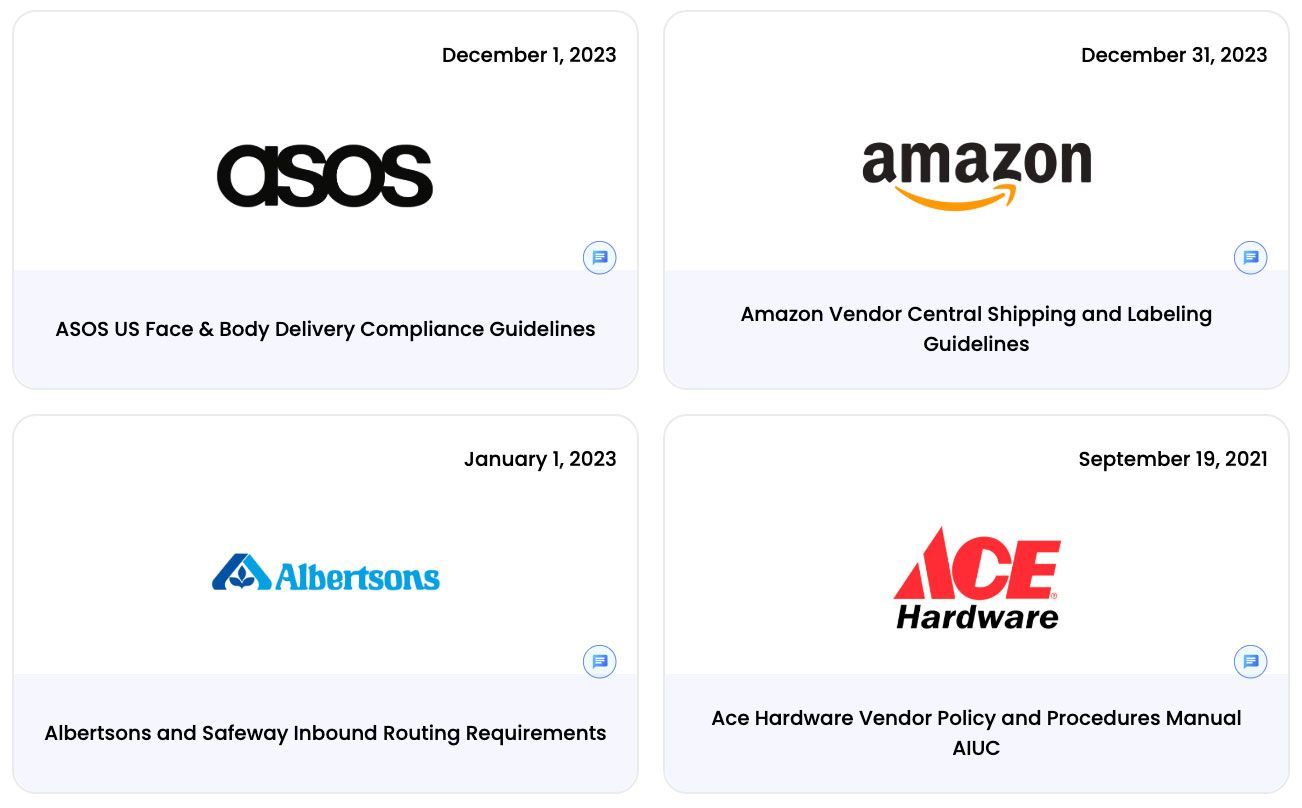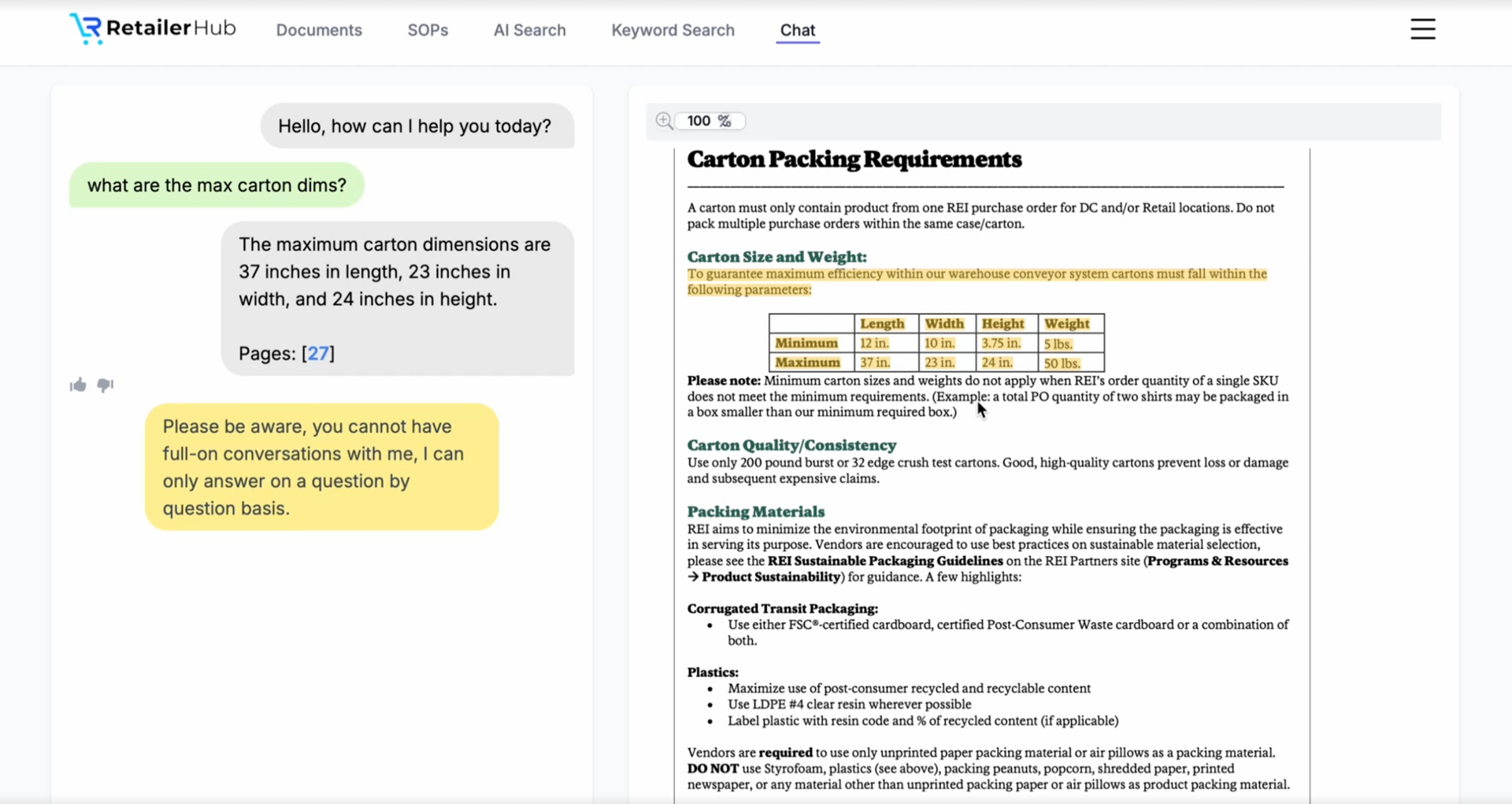Retailer Requirements Aren’t Just for Warehouses—They’re for Everyone
In the world of retail fulfillment, it's easy to assume that compliance with retailer requirements is just a warehouse issue. Labels, pallets, pack-outs, routing—it all sounds like operations territory. But that assumption is exactly why so many brands and 3PLs get hit with chargebacks, miss deadlines, or damage relationships with their retail partners. The truth is simple: retailer compliance isn’t just an ops issue. It’s a company-wide discipline. From sales and onboarding to customer success and planning, everyone plays a role in getting things right. When compliance lives in the warehouse only, it leads to a breakdown in communication, siloed decisions, and costly mistakes. Retailer expectations are evolving rapidly, and to meet them consistently, every team in your organization must speak the same compliance language.
Why Retailer Compliance Should Be a Shared Responsibility
Retailer requirements are detailed, dynamic, and often buried in PDFs or portals that are difficult to navigate. They impact more than just how a shipment is packed or when a truck is scheduled. Here's why everyone on your team should care:
Sales & Account Management
- Promise the right thing: Sales teams are often the first to interact with new retailer opportunities. If they don’t understand compliance expectations, they might overpromise on timelines or capabilities—setting the ops team up to fail.
- Set realistic expectations: Salespeople need to know what’s feasible based on labeling, routing, and lead time requirements so they can negotiate smartly.
- Build credibility: Getting it right from the first PO builds long-term trust with retail buyers. Repeated compliance issues can threaten that relationship.
Customer Success & Brand Teams
- Coordinate cross-functionally: CS teams need to ensure the brand, 3PL, and operations teams are all aligned.
- Catch issues early: With a working understanding of compliance requirements, they can proactively catch and communicate potential problems before they spiral into chargebacks or missed shipments.
- Answer client or buyer questions with confidence: Nothing undermines a relationship like fumbling an explanation of what went wrong.
Supply Chain & Planning
- Align on lead times and service levels: Planning teams need to understand compliance windows for PO acknowledgment, ASN submission, and on-time shipping.
- Avoid over- or under-promising capacity: Misunderstanding routing guides or dock requirements can lead to overcommitment and scheduling nightmares.
- Forecast inventory movements properly: Compliance rules often affect how inventory is received or transferred—especially with cross-docking and multiple channels.
Operations & Warehouse Teams
- Execute the playbook with confidence: Warehouse teams need crystal-clear SOPs for each retailer’s requirements—down to label placement, carton dimensions, and pallet build rules.
- Reduce chargebacks and rework: Even a small error—like a missing UCC-128 label or wrong ASN format—can cost hundreds or thousands.
- Improve throughput: Clear, retailer-specific instructions reduce stoppage time and increase operational efficiency.
The Problem with Isolated Compliance Knowledge
When only one team "owns" compliance—or when information is locked in someone's head or an outdated document—you get silos. Silos lead to breakdowns.
Common Symptoms of Siloed Compliance:
- Shipments fail retailer audits
- Chargebacks surprise the finance team
- Sales can’t explain what’s wrong with a PO
- Ops blames CS, CS blames sales, and no one has answers
- Launches with new retailers get delayed or fail entirely
Even worse? Retailer requirements change. If only one person is keeping up, the rest of the organization is flying blind.
How to Democratize Retail Compliance Knowledge
To succeed in today’s retail environment, compliance needs to be searchable, standardized, and shared across your entire organization. That requires modern tools and a mindset shift.
1. Use Searchable, Centralized Documentation
Ditch the static PDFs and outdated shared drives. Instead, use a system like RetailerHub where all teams can instantly access the most up-to-date retailer documentation.
- Search by keyword or question
- Filter by retailer, topic, or role
- Trust that it’s accurate and version-controlled
2. Generate SOPs for Everyone, Not Just the Warehouse
Create retailer-specific SOPs tailored to:
- Sales: Key compliance deadlines and restrictions
- CS: Labeling rules and communication protocols
- Planning: Lead times, booking windows, and ASN milestones
- Warehouse: Pack-out, pallet, and labeling details
Each team gets what they need in a language they understand.
3. Make It AI-Assisted and Source-Verified
With tools like RetailerHub, teams can ask questions in plain English:
- “What kind of label does Costco require?”
- “When does Target expect ASNs?”
- “Can you show me Walmart’s pallet specs?”
And they’ll get back answers with source citations and document highlights. No more manual digging, no more internal Slack chains.
4. Integrate Compliance into Onboarding & Training
Make retail compliance a core part of onboarding—not just for ops roles but for every function. Your CS manager, your junior planner, your sales assistant—everyone should understand:
- What a routing guide is
- What causes chargebacks
- What makes your warehouse or 3PL successful
The Payoff: Fewer Chargebacks, Smoother Launches, and Stronger Retail Partnerships
When compliance knowledge flows across teams, everyone is better equipped to:
- Launch new retail partnerships faster
- Reduce chargebacks and fulfillment errors
- Respond to retailer questions or changes with confidence
- Collaborate more effectively across departments
The brands that scale best aren’t just fast or lean. They’re aligned. And that alignment starts with shared knowledge.
Compliance isn’t a department. It’s an operating system.
Conclusion
Retailer requirements touch every corner of your business. They’re not just a checklist for ops or a document for the warehouse. They are a blueprint for how your company shows up to retail partners.
If you want fewer chargebacks, faster retail launches, and tighter internal alignment, you need to embed compliance into every team’s daily operations.
Want to see how RetailerHub makes that possible? Request a demo and bring your entire team into the loop.
See RetailerHub in Action
The best to see how RetailerHub works is by requesting a personalized demo. Let us show you more.







